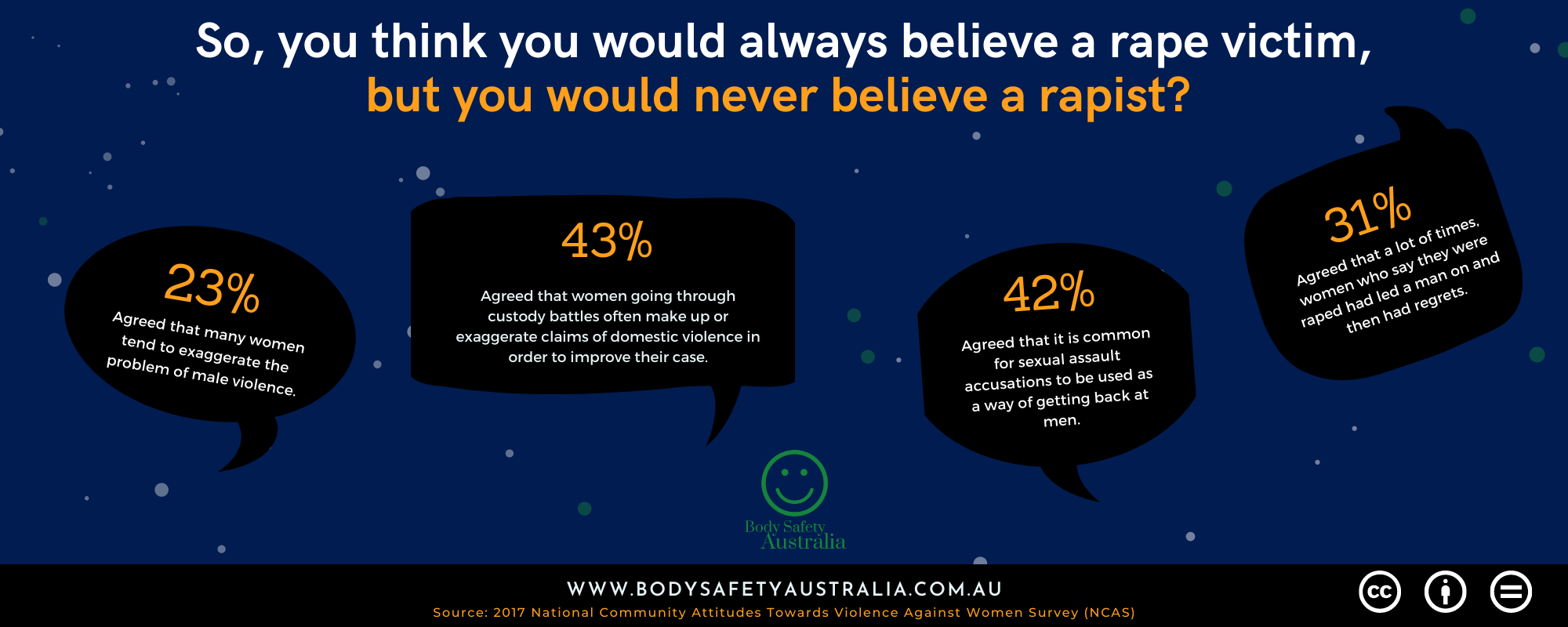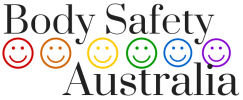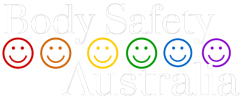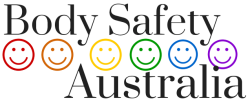
So, you think you would always believe a rape victim, but you would never believe a rapist?
If you ask Australians a blank question about whether a woman who says she’s been raped must show physical injuries to be taken seriously, 99 percent will say no. If, however, you tell people a story about a woman who says she’s been raped and ask whether the story is believable, two thirds of them will ask for information about physical injuries before deciding.
In other words, there is a huge gap between how we think we will respond to women who’ve been raped and how we actually respond. Inside that gap lies a wealth of myths about rape and an underlying belief that women cannot be trusted.
Research released last week by Australia’s National Research Organisation for Women’s Safety (ANROWS), titled “’Chuck her on a lie detector’: Investigating Australians’ mistrust in women’s reports of sexual assault”, provides robust evidence of the depth of mistrust most of us don’t even know we have about women and rape.
From the report: “The call to ‘chuck her on a lie detector’, and the ensuing sniggering laughter from participants, reflects the inherent assumption that women lie about sexual assault and, moreover, the flippancy and disrespect with which victims and survivors can be treated when disclosing or reporting their victimisation.”
The research is an in depth investigation of the troubling attitudes about sex and rape that were revealed by the 2017 National Community Attitudes towards Violence against Women Survey (NCAS). This is the survey that found 42 percent of people agreed it is common for sexual assault accusations to be used as a way of getting back at men, and 31 percent agreed that women who say they were raped had led the man on and then had regrets. These results are concerning enough given the evidence that only about 5 percent of rape allegations are false, but the deeper investigation by ANROWS revealed even more worrying results.
Almost all the participants of the study clearly understood the negative consent model – no means no. But they struggled with affirmative consent. When presented with two stories of women being raped, few asked what the man in the stories had done to establish consent. That wasn’t his responsibility. Their questions were predominantly about what the woman had done to make sure he understood her refusal (did she lead him on, did she fight back) and the motives she might have had to lie (was she “embarrassed” about consensual sex, was she “getting back at him” for something).
The study found that although only 16 percent of the survey respondents agreed that many allegations of sexual assault are false, when they were given scenarios of women saying they’d been raped, most the participants were sceptical or suspicious.
The research highlights how deeply so many of us believe myths about rape. Despite how we answer questions in a survey where there is no context, most of us don’t trust women who say they’ve been raped. We still believe that all men are primed to pursue sex, but we do not hold them responsible for making sure it is consensual. Women are still perceived as the gatekeepers of heterosexual sex, with primary responsibility for saying yes or no. Yet we also believe women cannot be trusted when they say a man ignored their “no”.
These are the myths that lead to chronic underreporting of sexual assault (87 percent of women who have been sexually assaulted do not report it to police) and a conviction rate of about 16 percent for the few sexual assaults that are reported. Essentially, we still don’t believe women who have been raped by men.
This is why consent education is so important, and why there is still so much resistance to it.
Resistance and suspicion about consent and respectful relationships education is usually based on the idea that it harms boys by assuming that all of them are budding rapists who need to be stopped before they start. While this might be true of a small number of boys, it’s certainly not true of all of them.
Some small number of children may one day become rapists. Other will grow up to be judges, jurors, bystanders, legislators, lawyers, friends, and family of rape victims. Sadly, too many of them will be victims themselves.
Given what we know about the prevalence of rape myths, it is unfair to expect those children to understand the realities of consent without help. Too many of them will not know the dangerous myths they have absorbed about men, women, lies and sex unless it is explained to them by someone who understands why they believe those myths and how complicated it is to unwind them.
In delivering best practice consent education, children need the opportunity to explore not only their rights, but also their responsibilities. When we teach a rights-based model, children understand that no means no. When we also teach responsibilities, children learn that in every physically intimate encounter, they have a responsibility to check that their partner is a willing and enthusiastic participant. It is then that consent education helps young people of all genders and sexualities understand that consent is a mutual responsibility that enhances sex for everyone involved.
![]() Republish our article under Creative Commons licence. Please do not edit the article, ensure that you attribute the authors, and mention that the article was originally published by Body Safety Australia.
Republish our article under Creative Commons licence. Please do not edit the article, ensure that you attribute the authors, and mention that the article was originally published by Body Safety Australia.



